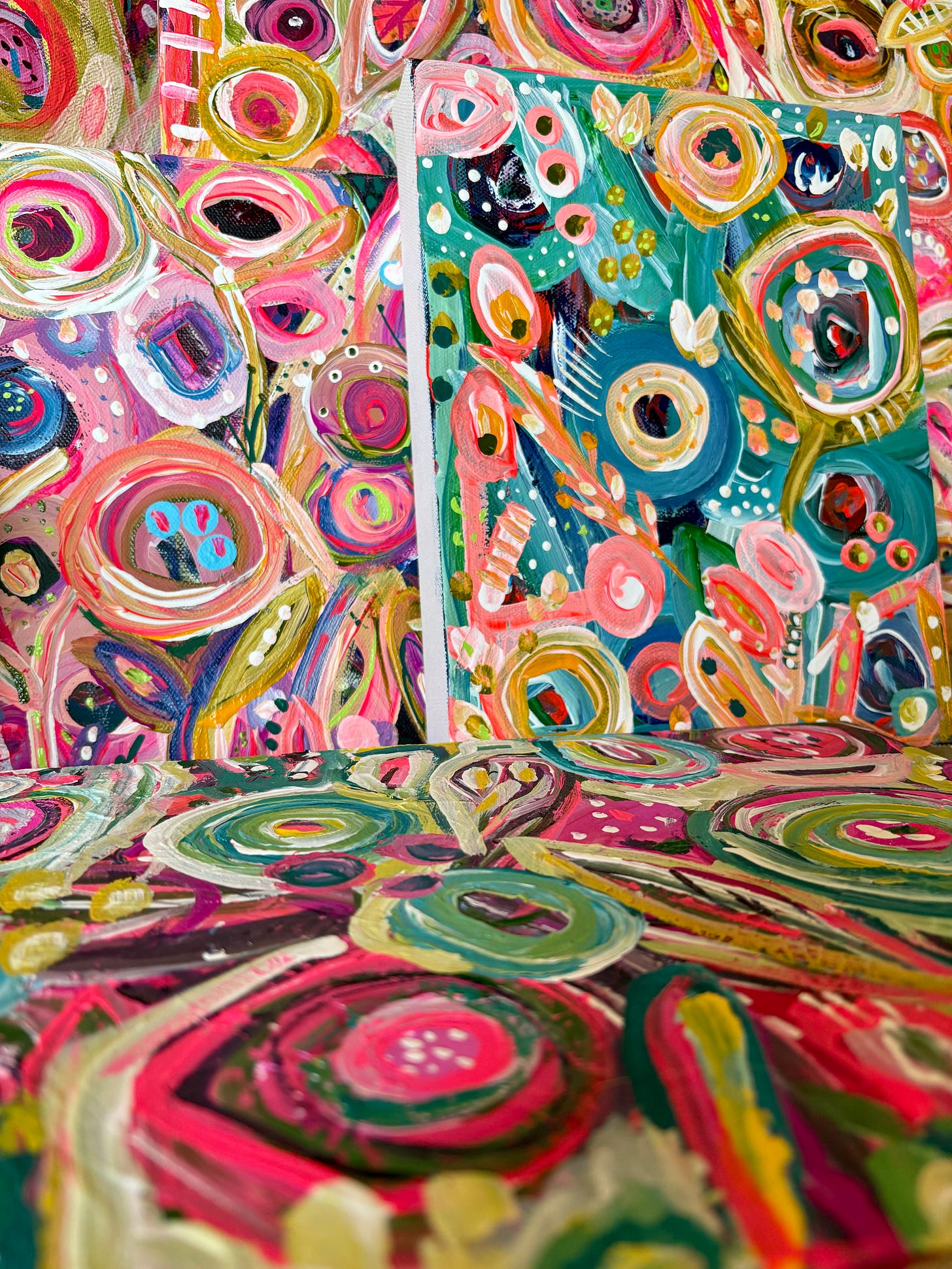Painting Through Chaos: Art as Rebellion, Healing, and Humanity
How family history, cycles of violence, and the weight of conformity find release through color and canvas.

Excerpt:
My family’s history is steeped in obedience and control, but my art seeks another path. In a world where violence and extremism are reshaping our collective psyche, I turn to the canvas to make sense of the chaos — to cover the dark with light, to find healing where the world fractures.
Roots in Obedience, Seeds of Questioning
My ancestors crossed the plains from Sweden and England to build the Salt Lake Temple in Utah. They left families, were disowned, and gave their lives to a system that demanded obedience. That heritage runs deep. And by the time I was thirteen, I was already standing in baptismal fonts, dressed in white, performing rituals for the dead — and quietly wondering why it all didn’t make sense.
Those questions never left me. They grew with me. Over time they became less about the church itself and more about how I live, how I create, and how I make meaning.
Faith, Control, and the Cycle of Violence
What I saw then, I see now: religion — and politics that borrow its energy — often equate obedience with virtue. Recruiting others becomes “service,” but beneath it is confirmation bias: if more believe as I do, then it must be true. It’s not just faith. It’s control.
This week, tragedy hit the headlines again. A man has died, not just a man but a father, a husband, a son. I won’t lie: part of me feels a certain relief when someone who spread hate can no longer harm others. But that does not mean I would ever wish them dead. It’s an ugly paradox — wanting the harm to stop, while knowing that violence only feeds the cycle. And the truth is, death doesn’t end an ideology. It often immortalizes it, turning a man into a martyr in the very movement that created the harm in the first place.
“You Reap What You Sow” — Conformity’s Cost
My great-grandfather, Ephraim Bjorklund, used to say: you reap what you sow. He said it as a Mormon, with the weight of that faith behind his words. And while I’ve left the conformity of religion behind, I still hear the truth of that phrase. Because when what we sow is control, indoctrination, or forced obedience, what grows is division, hate, and harm. Sowing conformity does not yield freedom; it only stifles humanity.
The Weight of Chaos on an Empath
And I feel that echo everywhere. I feel it in the violence in our streets, in the imbalance in our government, in the unspoken conformity demanded in our culture. I feel it in the weather itself, chaotic, destabilized. Energy — whether you call it psychic, spiritual, or collective — doesn’t disappear. It ripples. And right now, it is tearing through everything.
As an empath and intuitive, this weight is heavy to carry. I feel it in my chest, in my nervous system, in the way my hands move over a canvas. Some days my brushwork is sharp, intricate, frenetic — mirroring the world’s intensity. Other days I bury the dark beneath layers of calming light, painting my way into balance when I can’t find it outside. My art shifts constantly because my emotions shift constantly. But every layer is a record of living in this moment, in this chaos.
Art as Rebellion, Art as Healing
Perhaps art itself is a kind of rebellion — a way of breaking through damaging norms, of refusing the obedience that systems demand. Each canvas is a quiet act of resistance against conformity, a declaration that humanity is more than control.
The Common Thread of Creativity
In my heart, I want my art, along with my words, to illustrate the healing that happens when we create from that common thread of creativity we all carry. It doesn’t require conformity. It doesn’t require laws. It only asks for expression, humanity, and empathy.
I sometimes wonder: if the people who spend their lives enforcing conformity could stand in front of a canvas, palette in hand, and paint from their heart — what would they see? Would they recognize the beauty of non-conformity? Would they glimpse their own soul? Would they, maybe, be moved to change?
Because what I know is this: systems that divide us — religion, politics, extremism — will never heal us. They will only keep reaping what they sow. But creation, expression, art — these are acts of resistance and renewal. They are ways of saying enough is enough.
And if I refuse to conform to one faith, one ideology, one identity, it’s because I’ve already lived the weight of grooming and obedience. I don’t want obedience. I want humanity. And painting is how I choose it, again and again.
Closing Thought
In the end, I can’t control the cycles of hate or the chaos in the world — but I can choose what I sow. I can choose color over fear, expression over silence, and creation over conformity. That choice, made again and again, is my act of rebellion, my act of humanity.
Splinter & Bloom — a continuing story of art, memory, and meaning

